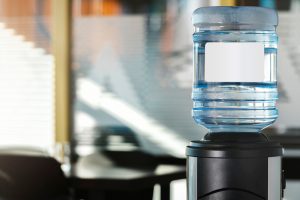EPA Administrator Lee Zeldin recently announced a proposal to approve the state of Arizona’s request to oversee Safe Drinking Water Act (SDWA) permitting for all underground injection wells in the state.
Carbon sequestration wells, also known as Class VI injection wells, store carbon dioxide (CO2) deep underground that has been captured from an emissions source or the atmosphere.
“Initially, EPA retained exclusive authority to administer the Class VI program,” according to law firm Sidley Austin. “However, since 2018, the agency has granted states the ability to assume primary enforcement responsibility—referred to as ‘primacy.’ Wyoming became the first state to obtain primacy for Class VI wells in 2018, followed by North Dakota in 2020 and, most recently, Louisiana in 2024. This trend reflects growing federal support for state-led implementation of carbon capture and storage (CCS) infrastructure. As of May 2025, three additional states—West Virginia, Texas, and Arizona—are in various stages of obtaining or finalizing Class VI primacy.”
The EPA has developed specific criteria under the SDWA to ensure underground sources of drinking water are protected from the CO2 stored in Class VI injection wells. Those criteria include:
- Site characterization requirements to ensure the geology in the project area can receive and contain the CO2 within the zone where it will be injected, including that the area is free of faults and fractures and that induced seismicity isn’t a concern.
- Requirements to predict the extent of the injected CO2 plume and associated pressure front for the project using computational modeling and to identify and address any deficiencies of existing wells within the area of review through corrective action. The area of review includes the area where the injected plume and its associated pressure front may impact pore fluids.
- Well construction requirements to ensure the Class VI injection well is constructed in a manner that will prevent any CO2 from leaking outside of the injection zone. Class VI injection wells and in-zone monitoring wells are designed for the life of the project. Owners or operators must demonstrate that the well materials, including casing and cement, are corrosion-resistant and compatible with the conditions and fluids they may be exposed to.
- Testing and monitoring requirements to monitor the integrity of the injection well, groundwater quality, and movement of the CO2 plume and pressure front throughout the life of the project, including after CO2 injection has ended, until the permitting authority determines no additional monitoring is needed to ensure the geologic sequestration (GS) project doesn’t pose an endangerment to underground sources of drinking water (USDWs).
- Operating requirements to ensure the injection activity is appropriate to the well’s construction and geologic characteristics so it won’t endanger USDWs or human health.
- Requirements to plug the injection well in a manner that won’t allow fluid movement that endangers USDWs.
- Requirements for the operator to establish and maintain financial instruments sufficient to cover the cost of corrective action, such as plugging the injection well, post-injection site care, and emergency and remedial response for the GS project (i.e., financial responsibility).
- Requirements to develop and maintain a site-specific emergency and remedial response plan.
- Requirements for the Class VI well owner or operator to report all testing and monitoring results to the permitting authority to ensure the project is operating in compliance with all permit and regulatory requirements.
These injection wells—when used as part of CCS and CO2 removal (CDR) projects—are a critical tool for reducing carbon emissions to meet mid-century climate goals, according to the EPA.
“This action recognizes that Arizona is best positioned to protect its underground sources of drinking water while bolstering economic growth and energy dominance,” an EPA news release says.
“Advancing economic growth and energy production in the United States, while safeguarding water resources, are common sense priorities to Power the Great American Comeback,” notes Zeldin. “With this proposal, we are advancing cooperative federalism and supporting energy dominance as Arizona becomes the primary regulator of underground injection wells within their state.”
See the EPA’s class VI wells webpage for additional information.

